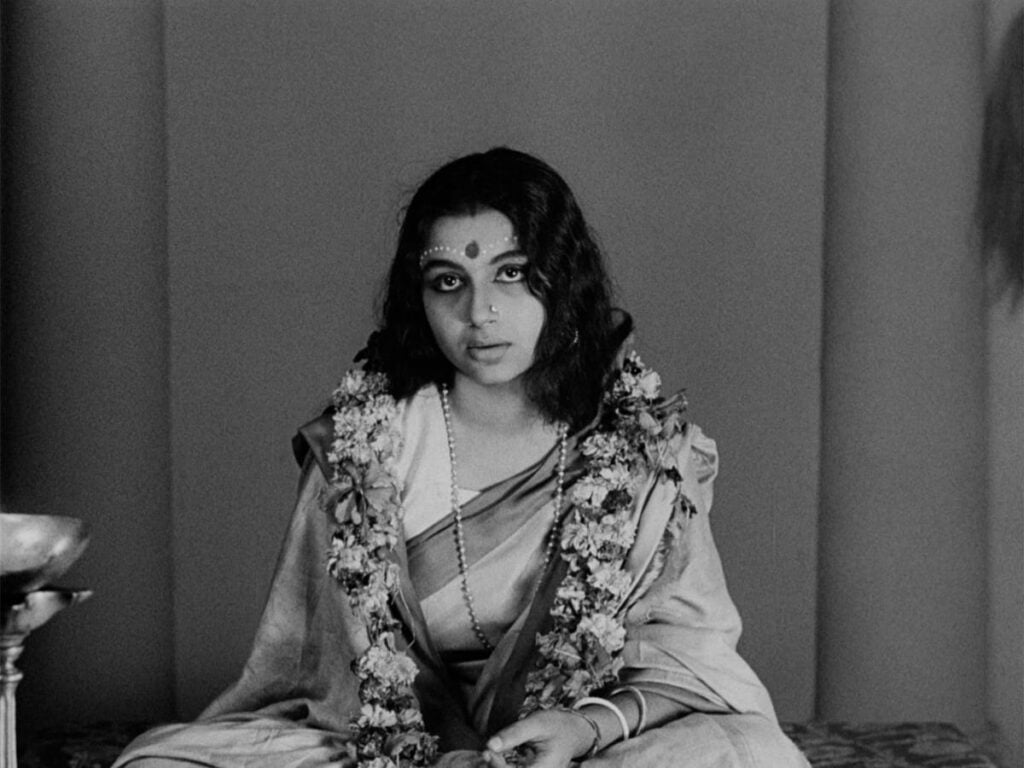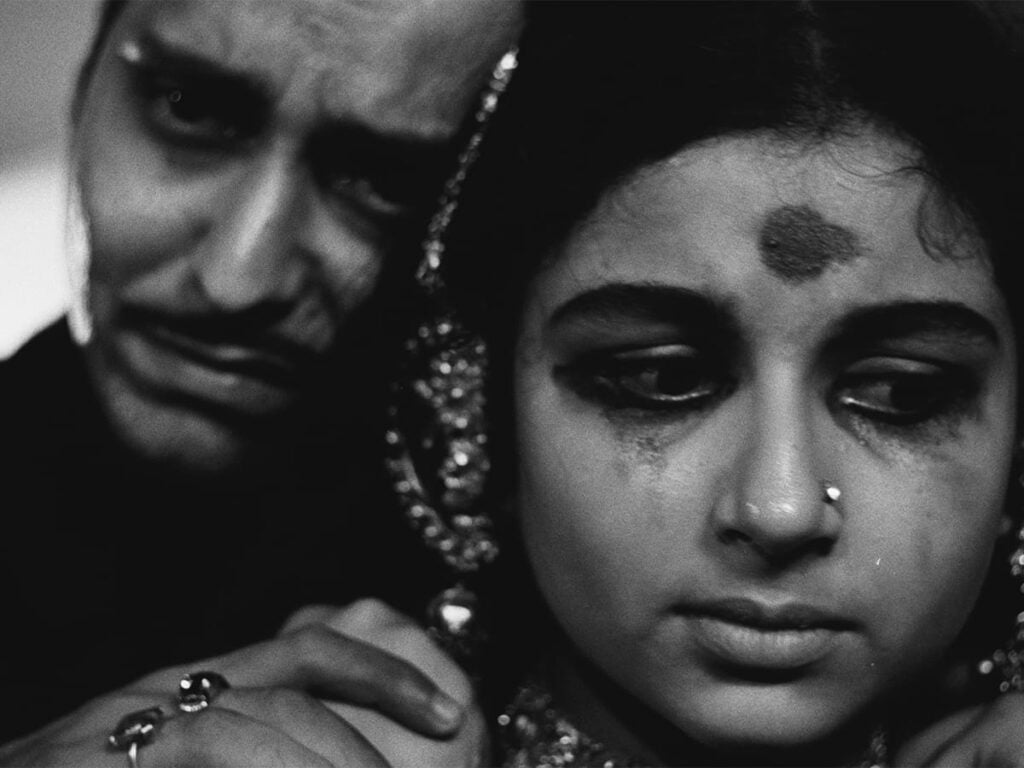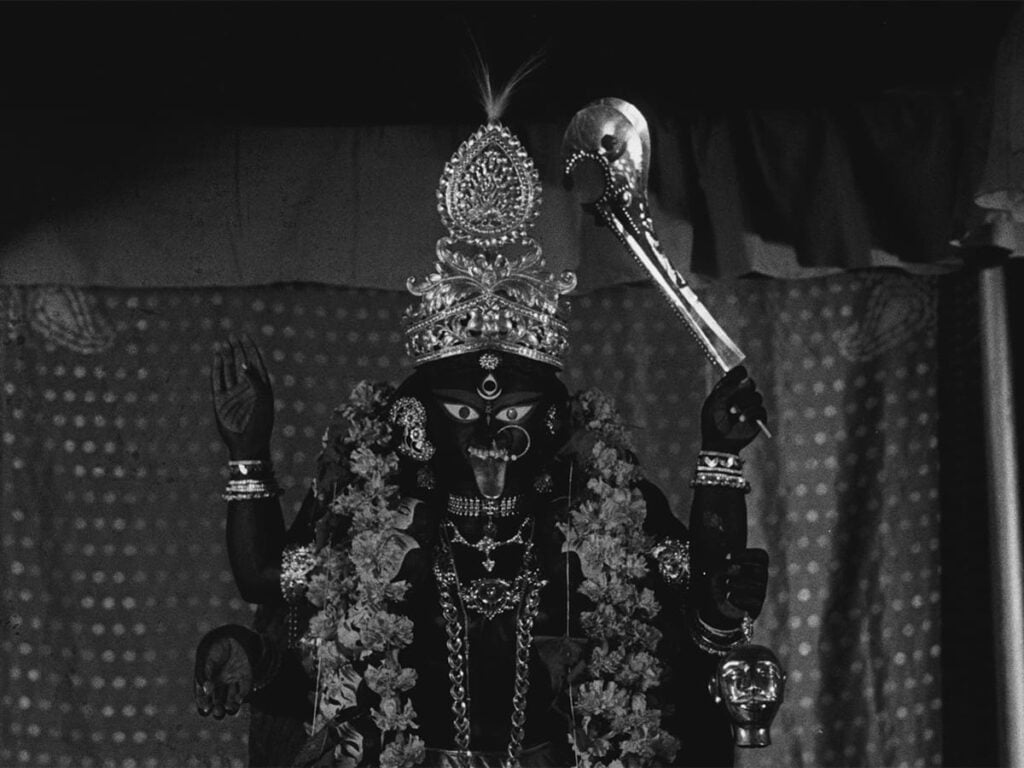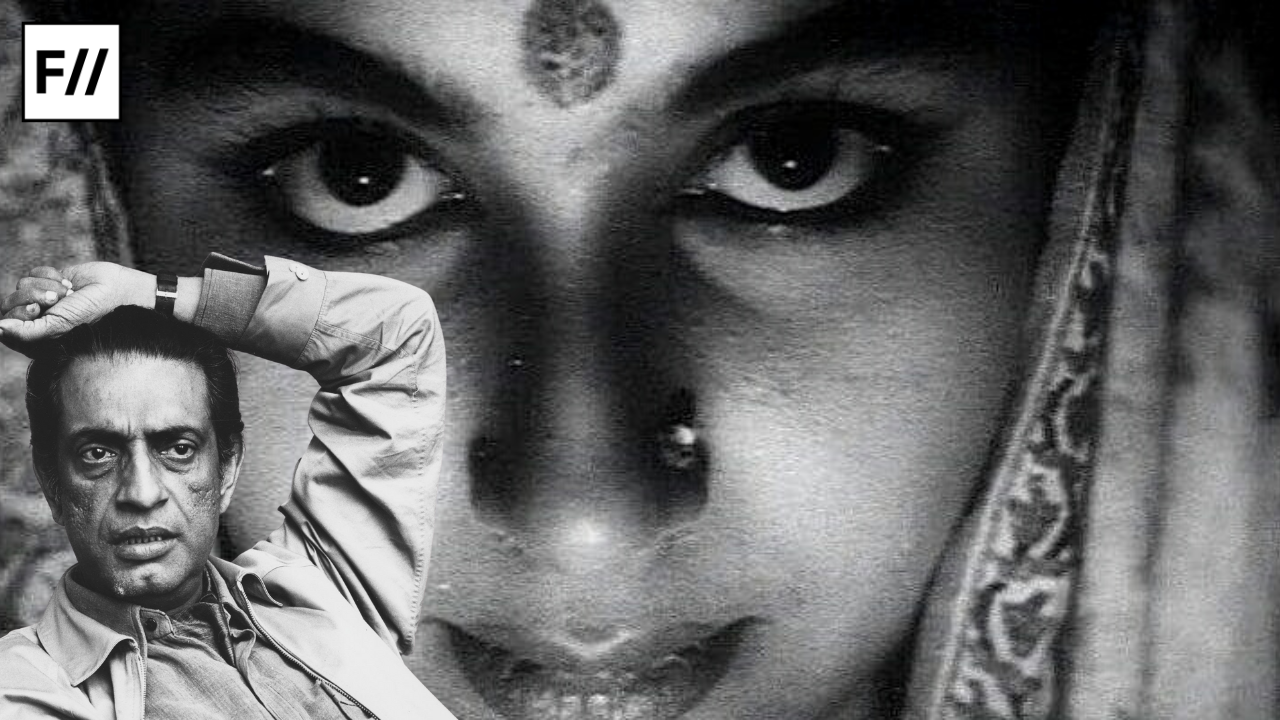Visionary Bengali filmmaker and pioneer of the Indian Parallel Cinema Movement, Satyajit Ray, shocked audiences and garnered much criticism for “anti-Hindu” sentiments following the release of his 1960 film Devi (The Goddess), which follows a young bride in nineteenth-century rural Bengal as her father-in-law, a pious zamindar, comes to believe that she is the reincarnation or “avatar” of Goddess Kali after he envisions her in the role in a dream.
Declaring her to the world as such, he unwittingly leads her down a path to her own undoing. Based on an 1899 short story of the same name by prolific Bengali writer Provatkumar Mukhopadhyay, who was in turn allegedly inspired by true events, the adaptation takes a different approach to the source material but retains, or rather elevates its core themes.
Devi was Satyajit Ray’s first foray into being critical of superstition on screen and this was not without its risks given India’s sociocultural landscape. However, despite protests against what many perceived as an attack on Hinduism, the film was well-received overall and even went on to win the President’s Gold Medal and receive a nomination as India’s official entry into the 1962 Cannes Film Festival.
But what makes Devi unique in its approach to religious fervour is its narrative choice to depict this through the wide-eyed gaze of 17-year-old Dayamoyee, played expertly and evocatively by a young Sharmila Tagore in her second, and preferred, collaboration with Satyajit Ray following his 1959 film Apur Sansar. Similar to their previous collaboration, her on-screen pairing with Soumitra Chatterjee forms the emotional core of the story here as well and relies on their chemistry to deliver some of the most devastating scenes in the film.
Also Read: Adalat O Ekti Meye Opts To Not Have A “Male Saviour” For A Rape Victim
Becoming the goddess
With minimal dialogue, Tagore manages to imbue every frame that she dominates with a sense of innocence, and later hopelessness, with her subtle performance. Combining this with a reliance on medium and close-up shots to represent her, furthers a shared sense of dread and isolation at her place in this world.

She is an ornament, akin to a religious idol, that decorates the halls of this upper-class household to serve the sensibilities of the patriarch. She has been ascribed divinity and reduced to the image of a goddess, by virtue of her womanhood being exalted by her widowed father-in-law, before she is even recognised as a human being.
Chatterjee plays the progressive English-educated youth, Umaprasad, who leaves home to complete his exams. He is presented as the alternative to his father’s (Chhabi Biswas) traditional mindset from the outset and through various instances in the film with regard to topical matters such as widow remarriage and religious orthodoxy. When he returns to his home after receiving a concerning letter from his sister-in-law (Karuna Banerjee), he is appalled by the sight he is greeted with, of his tear-streaked wife being worshipped by religious men at the behest of his father.

As an audience, we expect this to be the turning point of the story, of a chance for her to be rescued from the sanctions imposed upon her, but it could never have been that simple in a society as deeply entrenched in superstition.
Though faced with the possibility of an escape with her husband, Dayamoyee begins to question if she truly is the reincarnation of Goddess Kali after coming face to face in the process of her escape with an idol of Goddess Durga abandoned on the beach and remembers the ailing boy who opened his eyes after being placed in front of her and made to drink the water that has bathed her feet. Despite her visible frustration at her new role, she rejects her husband’s plan and returns home out of a sense of obligation to live up to what has been decided for her as she begins to doubt what she knows about herself. Powerless to object and persuaded to comply, she resigns herself to her foreseeable future as a living idol.
The death of the goddess
While this would paint a bleak portrait in and of itself, the definitive factor in Devi’s longevity as a classic within the continuum of religious critiques in India would be its nebulous ending, especially with regard to its final, heartbreaking scene. Returning once more to the original short story, both source and adaptation continue down the path thus set as Dayamoyee’s beloved nephew Khoka (Arpan Chowdhury) falls ill and is set in her arms to heal at her behest. On his demise, both stories diverge.
“That day, no worship was offered to her. No devotees came to catch a glimpse of her, or to pay her homage. Dayamoyee sat in the prayer room all day and all night, amidst heaps of flowers and sweets from the day before,” writes Provatkumar Mukhopadhyay, “The next morning, when Kalikinkar opened the door of the prayer room, he found the goddess hanging by the neck from the ceiling.”

A haunting image for the audience to come away with, Satyajit Ray similarly intended for a decisive end to Dayamoyee’s story with her drowning herself in a river to escape the wrath of those that would see her as a witch who had taken the life of a little boy. However, due to a technical malfunction, the shot was rendered useless. In its place, Ray depicts Dayamoyee dying by the riverbank as Umaprasad reaches for her in vain. But right as the film was to be screened at the 1960 Cannes Film Festival, Ray discarded this final shot and left us with a shot of Dayamoyee racing through a meadow and disappearing into the fog, her final fate left unknown, preceded only by the harshly lit sequence of Umaprasad coming upon a desolate Dayamoyee muttering to herself of her need to escape from being killed by the deceived townsfolk.
Also Read: Film Review Of Nagarkirtan: A Poignant Tale Of Queer Love And Identity
Was there ever a goddess?
Devi is more than a cautionary tale, it is a mirror held up to a society that claims to be “modern” while worshipping at the altar of tradition at the cost of women’s minds, bodies, and lives. While, in the film, we see a glimmer of hope for the future in the form of Umaprasad, and men like him, it is worth remembering that they are still subservient to the will of the patriarch if they wish to succeed in his role one day. The alternative is to be left with nothing, and few would risk the comfort of their lavish lives for their cause.
But what relevance does this deification of a woman hold in the twenty-first century as a commentary upon her place in society?

While even a progressive man will revere his mother, daughter, or sister as a “goddess” within the Indian tradition as a sign of respect, he will falter at recognising her interiority beyond being an extension of him that he has elevated to divinity by viewing her role in his life as pre-ordained. Like Kalikinkar, he will find himself enamoured by a woman’s service to him as an expression of her divine femininity, instead of as an indication of her subjugation, and reward her in the belief that he is providing her with respect, rather than reinforcement.
Women are not goddesses, abstractions to be admired, but human beings who are to be understood and empathised with.
About the author(s)
Tanya Roy is a 20-year-old student at FLAME University in Pune, with a major in Film & Television Management and a minor in Literary & Cultural Studies. She is interested in critiquing and analysing art in its different mediums through a feminist lens and is an avid reader of feminist and other sociocultural theories.






Very well articulated!